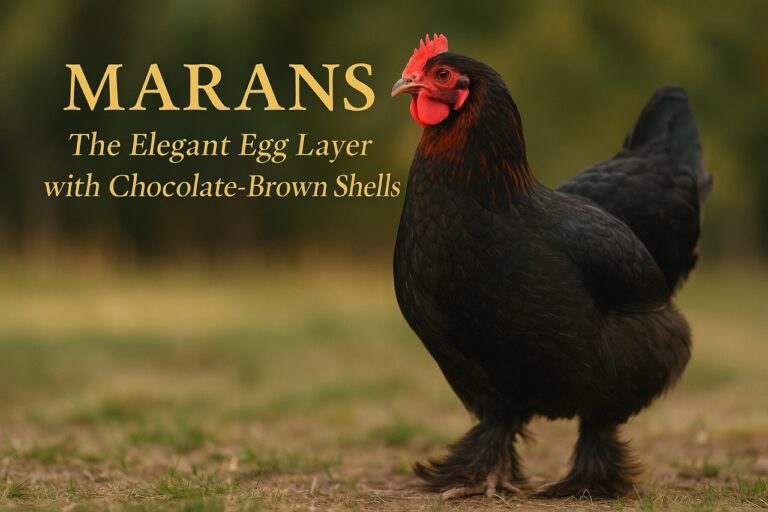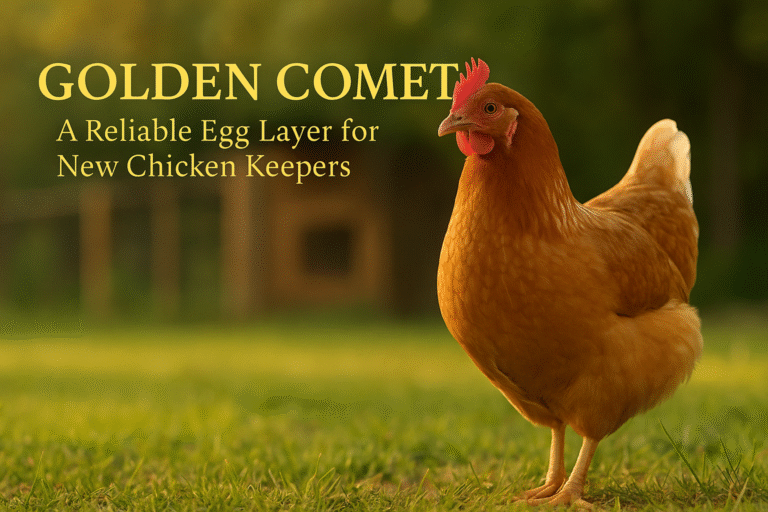Losing a pet chicken or duck is more than just losing a farm animal — it’s saying goodbye to a companion. Creating a living memorial through burial and planting offers a respectful, meaningful way to honor their memory and nourish life in the process. This guide will walk you through how to bury your pet, plant a living tribute, and support both your garden and grieving heart.
🌱 Why Create a Living Memorial?
A living memorial goes beyond a simple burial — it transforms grief into growth. Here’s why this practice is so powerful:
1. Cycle of Renewal
As your pet’s remains decompose, they return nutrients to the soil, creating a natural foundation for new life to grow. It’s a beautiful reflection of nature’s renewal.
2. Personalized Tribute
A tree, shrub, or flower planted in memory of your pet becomes a lasting, visible tribute. Each bloom or branch keeps their spirit present in your garden.
3. Sustainable Gardening
Animal remains enrich the soil like organic compost. Planting above a burial site supports pollinators, fruit trees, and a flourishing backyard ecosystem.
📍 Step-by-Step: How to Bury Your Pet and Plant a Living Memorial
1. Choose the Right Location
- Find a peaceful, undisturbed spot in your yard
- Avoid areas near water sources or edible gardens
- Ensure the site gets the right sunlight for your chosen plant
2. Prepare the Burial Site
- Dig a hole 2–3 feet deep
- Add a base layer of straw, sawdust, or wood shavings
- Gently place your pet inside and cover with soil
3. Select a Meaningful Plant
Pick a plant that fits your climate, soil, and sentiment:
Fruit Trees
- Apple, Cherry: Symbolize abundance and renewal
- Mulberry, Fig: Hardy and productive, ideal for memory + sustenance
Berry Bushes
- Blueberry: Thrives in acidic soil, great for legacy gardens
- Elderberry: Medicinal and pollinator-friendly
Flowering Shrubs
- Lavender: Fragrant and calming
- Hydrangea: Long-lasting, seasonal blooms
4. Plant the Living Marker
- Dig a shallow planting hole above the burial site
- Carefully place your plant without disturbing the remains
- Water generously and mulch around the base
🌳 Garden Benefits of a Living Memorial
✔️ Soil Enrichment
Animal remains create a slow-release fertilizer effect — rich in nutrients that promote plant health.
✔️ Supports Wildlife
Fruit trees and berry bushes attract birds, bees, and butterflies, adding life to your garden.
✔️ Emotional Connection
Every harvest or bloom becomes a reminder of your pet, turning grief into joy and purpose.
✔️ Homestead Sustainability
Memorial trees provide beauty and food. Your pet’s legacy can quite literally feed your family.
💧 Caring for Your Living Memorial
- Water regularly, especially during the first year
- Add mulch annually to preserve moisture and boost soil health
- Prune seasonally to maintain growth and shape
- If a plant fails, replant with a hardier species suited to your zone
🕊️ The Beauty of Transformation
Nature never wastes. Through this sacred practice, your pet’s life becomes part of something enduring — fruit-bearing, shade-giving, pollinator-supporting beauty. Each season that passes renews your connection to them and to the earth.
This isn’t just burial. It’s renewal. It’s healing.
🐔 Related Reading on Paranoid Prophet
- Sacred Stewardship – Backyard Chickens and God’s Design
Explore how caring for chickens reflects biblical stewardship and the call to gently tend creation. - Backyard Chickens and Ethical Living
Discover how raising animals with care supports compassion, sustainability, and faith-based values. - Backyard Chickens Build Community
Chickens don’t just feed — they connect. Learn how flocks become local bridges and spiritual rhythms. - Chicken Dust Bath Guide
Understand one of the most important (and joyful) ways chickens care for themselves naturally.
SOURCES
Honoring a deceased pet chicken through proper burial and memorialization is a meaningful way to cherish their memory. Here are some external resources offering guidance on this process:
- 4 Steps to Properly Burying a Deceased Chicken
This article outlines essential steps for burying a chicken, including checking local ordinances, selecting an appropriate burial site, and ensuring the grave is deep enough to prevent scavenging by other animals. - Chicken Memorials: Your Tribute to a Much-Loved Hen or Rooster
This resource discusses various ways to memorialize a pet chicken, such as creating personalized memorial stones or plaques, and offers a platform for sharing tributes to beloved chickens. - How to Dispose of a Dead Chicken (4 Options)
This guide explores different methods for disposing of a deceased chicken, including burial, cremation, and composting, along with considerations for each approach. - Chicken Memorial Gifts
This Etsy marketplace features a variety of handmade and personalized memorial items for chickens, such as engraved stones, ornaments, and garden stakes, allowing pet owners to create a lasting tribute. - 5 Helpful Tips—What to Do When Your Chicken Dies
This article provides practical advice on handling the death of a chicken, including determining the cause of death, disposal options, and coping with the emotional aspects of losing a pet.
These resources offer valuable insights into both the practical and emotional aspects of saying goodbye to a pet chicken, helping you navigate this challenging time with compassion and respect.
FAQs: Living Memorial for Pet Chickens or Ducks
General Questions About Living Memorials
- What is a living memorial for a pet chicken or duck?
A living memorial involves burying a pet chicken or duck and planting a tree, bush, or flower above their resting place as a symbolic and sustainable way to honor their memory. - Why should I create a living memorial for my pet chicken or duck?
A living memorial offers a lasting tribute to your pet, enriches the soil, and contributes to your garden’s beauty and productivity. - Is it safe to bury a pet chicken or duck in my backyard?
Yes, as long as you follow local regulations, bury the remains at an appropriate depth, and choose a location away from water sources and vegetable gardens. - Can a living memorial benefit my garden?
Absolutely. The decomposition of your pet’s remains enriches the soil with nutrients, supporting the growth of the tree, bush, or flower planted above.
Choosing and Planting Living Markers
- What types of plants are best for a pet memorial?
Fruit trees, berry bushes, and flowering shrubs like lavender or hydrangea are excellent choices, as they provide beauty, sustenance, and biodiversity. - How deep should I bury my pet chicken or duck?
Aim for a depth of 2–3 feet to prevent disturbance from scavengers and ensure proper decomposition. - Can I plant a fruit tree over the burial site?
Yes, planting a fruit tree is a meaningful way to create a living marker while producing food for your family. - Should I add anything to the soil when burying my pet?
Adding a layer of organic material like straw or wood shavings can aid decomposition and improve soil health. - What is the best time of year to plant a living marker?
Fall and spring are ideal planting seasons, as they provide favorable conditions for root establishment.
Caring for Your Living Memorial
- How do I maintain a living memorial plant?
Water the plant regularly, especially during its first year, and mulch annually to retain moisture and enrich the soil. - Does the type of soil affect the plant’s growth?
Yes, matching the plant to your soil type and sunlight conditions ensures it thrives. For example, blueberries prefer acidic soil, while lavender grows well in well-drained, sandy soil. - Can I prune the tree or bush planted as a living memorial?
Pruning is recommended to maintain the health and shape of the plant and to encourage new growth each season. - What if the plant doesn’t survive?
If the plant fails to thrive, consider testing the soil and replanting with a hardier species suited to your climate and conditions. - Will the burial site attract scavengers?
Properly burying your pet at a sufficient depth (2–3 feet) and compacting the soil should prevent scavengers from disturbing the site.
Symbolism and Personal Connection
How does a living memorial honor my pet’s memory?
A living memorial grows and changes over time, serving as a tangible, beautiful reminder of your pet’s life and their connection to your garden.




